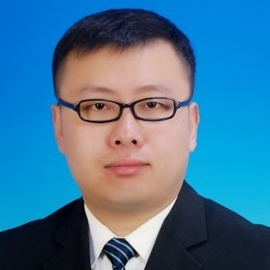Advances in Electric Charge Behavior Modulated Insulation Performance in High Voltage Power Equipment
A special issue of Energies (ISSN 1996-1073). This special issue belongs to the section "F: Electrical Engineering".
Deadline for manuscript submissions: closed (31 July 2023) | Viewed by 10046
Special Issue Editors
Interests: ageing of polymer insulating material used under radioactive environment; nano-dielectrics; condition monitoring; diagnosis of power equipment
Special Issues, Collections and Topics in MDPI journals
Interests: advanced insulating materials for power cables and accessories; condition assessment; multiphysics simulation technologies for cable systems
Special Issues, Collections and Topics in MDPI journals
Special Issue Information
Dear Colleagues,
With the development of the electrical power industry, the enhancement in voltage level yields new challenges to insulation of high voltage power equipment. Such challenges become even more remarkable as the compactness and the miniaturization of the equipment are required by power consumers. Accordingly, insulation safety plays a very important role in the reliable service of the equipment. Electric charges appearing in insulating material or at the material surface have been recognized as a critical reason for electric field distortion which triggers insulation breakdown failure. Understanding of the charge behaviour is thereby essential for the design and the ageing evaluation of insulation installed in the equipment. Over the past 40 years, the progresses of measuring techniques have enabled researchers the in-depth investigation of the charge dynamic behaviour and its related insulation performance. This Special Issue aims to present the most recent advances in electric charge related studies including measuring technique, theory, modelling, design and especially its role in modulating the performance of insulating materials.
Topics of interest for publication include, but are not limited to:
- Measuring techniques of electric charges in gas, liquid, or solid insulating materials.
- Phenomenon and modelling of electric charge dynamic behaviour in gas, liquid, or solid insulating materials.
- Electric charge modulated dielectric breakdown behaviour at insulating materials.
- Space charge or interface charge within cable insulation systems.
- Surface charge accumulation and decay on spacers installed in Gas Insulated Switchgear (GIS) and/or Gas Insulated Transmission Line (GIL).
- Charge dynamics at oil–paper interfaces with oil-impregnated paper insulation.
- Charge implant and decay in solid dielectrics used in aerospace environments with energetic radiation.
- Breakdown of gas, liquid, or solid insulating materials.
- Method and strategy to control the charge and improve insulation performance.
Dr. Yu Gao
Dr. Zhonglei Li
Guest Editors
Manuscript Submission Information
Manuscripts should be submitted online at www.mdpi.com by registering and logging in to this website. Once you are registered, click here to go to the submission form. Manuscripts can be submitted until the deadline. All submissions that pass pre-check are peer-reviewed. Accepted papers will be published continuously in the journal (as soon as accepted) and will be listed together on the special issue website. Research articles, review articles as well as short communications are invited. For planned papers, a title and short abstract (about 100 words) can be sent to the Editorial Office for announcement on this website.
Submitted manuscripts should not have been published previously, nor be under consideration for publication elsewhere (except conference proceedings papers). All manuscripts are thoroughly refereed through a single-blind peer-review process. A guide for authors and other relevant information for submission of manuscripts is available on the Instructions for Authors page. Energies is an international peer-reviewed open access semimonthly journal published by MDPI.
Please visit the Instructions for Authors page before submitting a manuscript. The Article Processing Charge (APC) for publication in this open access journal is 2600 CHF (Swiss Francs). Submitted papers should be well formatted and use good English. Authors may use MDPI's English editing service prior to publication or during author revisions.
Keywords
- space charge
- surface charge
- interface charge
- insulation performance
- cable insulation
- carrier trap
- spacer
- deep dielectric charging
- flashover
- suppression
- breakdown
- nanodielectrics






